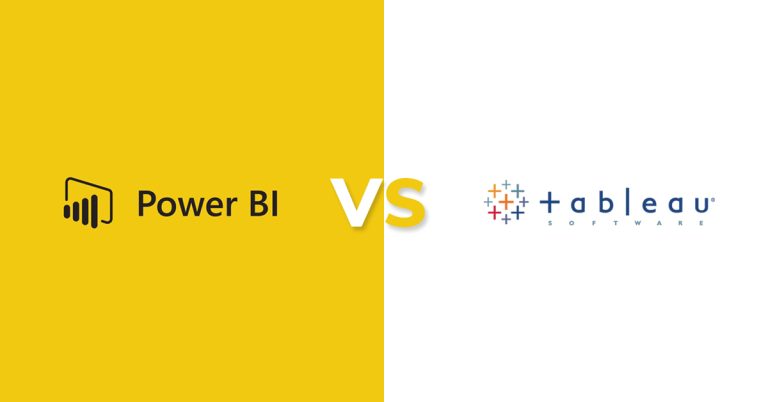Moving from one tool to another can seem overwhelming, especially when your data is at stake. If you’re thinking about switching from Tableau to Power BI, you probably have questions like “Where do I start?” and “How do I avoid problems?” during Tableau to Power BI migration. Relax—you’re in the right place!
This guide will help you every step of the way. We’ll explain why Power BI might be the better choice for your needs, show you how to migrate your data, and give you tips to make the process as smooth as possible. By the end, you’ll know exactly what to do.
Let’s jump in and see how Power BI can help you save money and make the most out of your data.
Table of Contents
Getting Ready to Migrate: The Preparation Phase

Preparation is key to making the Tableau to Power BI Migration smooth and seamless. Here’s how to get started:
Tableau to Power BI Migration: A Step-by-Step Process

Once you’re ready, follow these steps to move from Tableau to Power BI:
1. Prepare Your Data
- Map Out Data Sources: Start by identifying your current data sources in Tableau and plan how they’ll transfer to Power BI. This is a good time to clean and organize your data for better performance.
- Clean Your Data: Remove duplicates, fix errors, and tidy up your data to make the transition smoother.
2. Move Your Reports and Dashboards
- Start with the Essentials: Begin by moving your most important dashboards. This ensures that the critical data stays accessible and helps you gather feedback early.
- Use Power BI’s Features: Don’t just copy what you have in Tableau. Take advantage of Power BI’s unique features, like AI-driven insights and custom visuals, to enhance your reports.
3. Test and Validate Everything
- Check for Accuracy: After moving your data, compare the Power BI reports with your Tableau reports. Make sure everything matches and looks right.
- Get User Feedback: Ask the people who will use the reports to test them. Their feedback will help you fine-tune the new setup.
4. Training and Support
- Help Your Team Learn: Offer training sessions to help your team get comfortable with Power BI. Provide resources like video tutorials and hands-on workshops.
- Be There for Support: Continue to offer help after the migration is done. Answer questions and provide guidance as your team gets used to the new tool.
Tableau to Power BI Migration: Common Challenges and How to Solve Them

You might run into a few challenges during the migration. Here’s how to handle them:
1. Data Doesn’t Match Up:
Not all data structures in Tableau will fit perfectly into Power BI. You might need to create custom solutions, like using DAX functions, to get the same results.
2. Resistance to Change:
People might be hesitant to switch tools. Show them how Power BI can make their work easier and more efficient, and provide plenty of training.
3. Performance Issues:
Large datasets can slow down Power BI reports. Simplify your data models and use Power BI’s performance analyzer to identify and fix any slow points.
4. Ensuring Accuracy:
Double-check that the data in Power BI matches what you had in Tableau. Running both systems in parallel for a while can help ensure everything is correct.
5. Managing the Change:
Keep everyone informed and involved in the process. Clear communication and support are key to a successful transition.
Best Practices After Tableau to Power BI Migration

Once you’ve migrated, these tips will help you get the most out of Power BI:
Keep Reports Updated: As your business changes, update your Power BI reports to keep them relevant and useful.
Learn from the Power BI Community: Join forums and online groups where Power BI users share tips and advice. This can help you learn new tricks and stay updated.
Ongoing Training: Encourage your team to keep learning. As they get more comfortable with Power BI, they can explore advanced features and improve their skills.
Monitor and Improve: Regularly check how your reports are performing and ask for feedback. This will help you keep everything running smoothly.
Explore Advanced Features: Once your team is confident with the basics, try out Power BI’s advanced features. AI insights, custom visuals, and integrations with other Microsoft tools can unlock even more value from your data.
Get a Power BI Platform Migration Service Provider

Migrating from Tableau to Power BI can be complex, especially if you’re dealing with large datasets or intricate dashboards. To ensure a smooth and successful transition, consider working with a Power BI platform migration service provider.
A specialized service provider offers the expertise needed to handle the migration process effectively. They can manage everything from data mapping and dashboard recreation to thorough testing and validation. With support from Power BI experts, your team will receive the necessary training to become comfortable with the new system.
Choosing a migration service provider allows you to focus on running your business while experts handle the technical details. This approach saves time, reduces the risk of errors, and ensures your data is accurate and your reports are fully functional from day one.
Looking for a Smooth Tableau to Power BI Migration? Let's Talk
Switching from Tableau to Power BI can bring many benefits, from cost savings to better integration with Microsoft tools. With careful planning and the right support, you can make the transition smooth and successful. Power BI offers powerful tools to help your business grow and make smarter decisions based on your data.
Are you ready to get started? Start planning your migration today, and watch how Power BI takes your data analytics to the next level.













